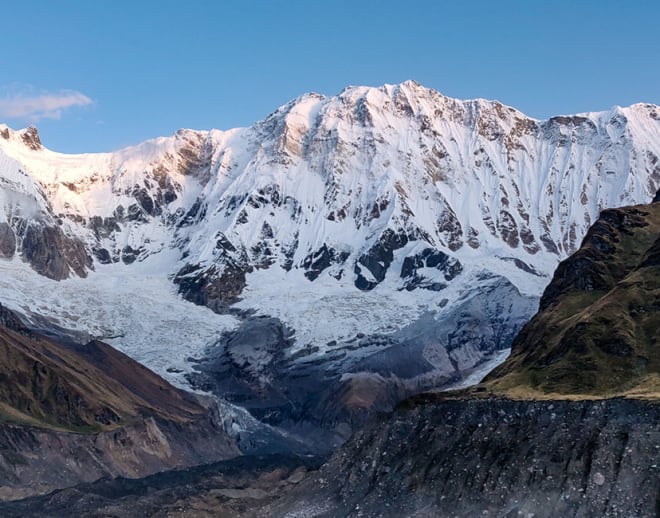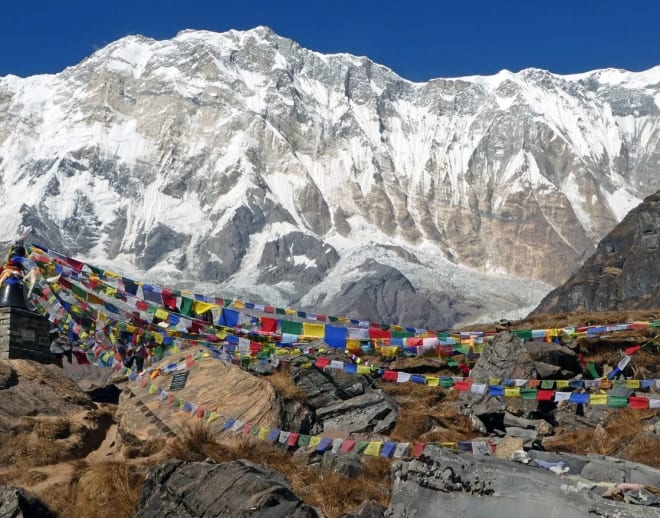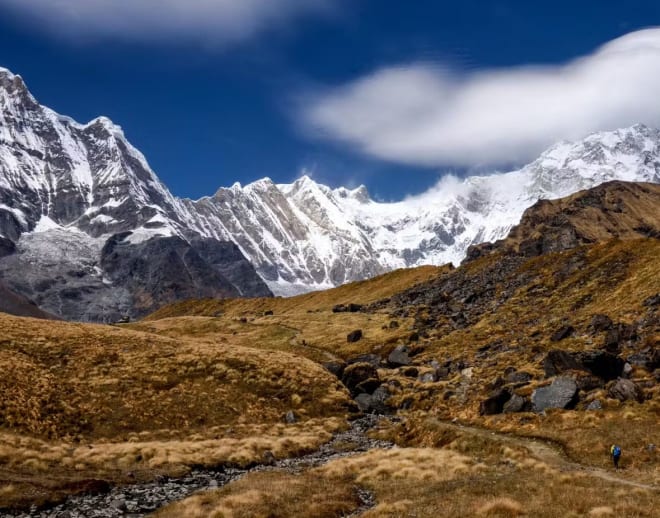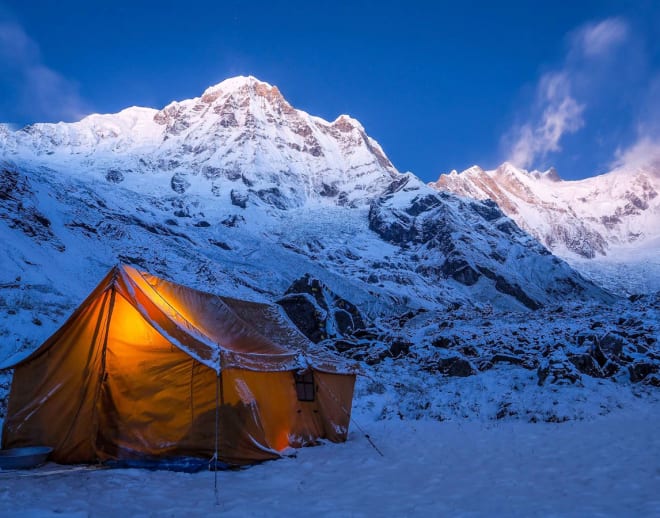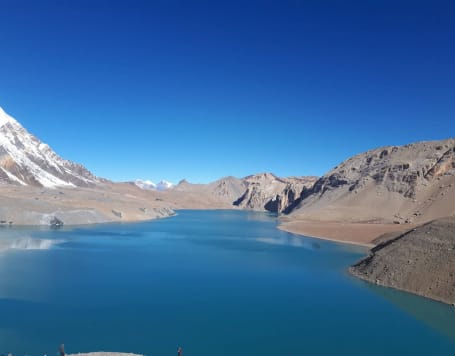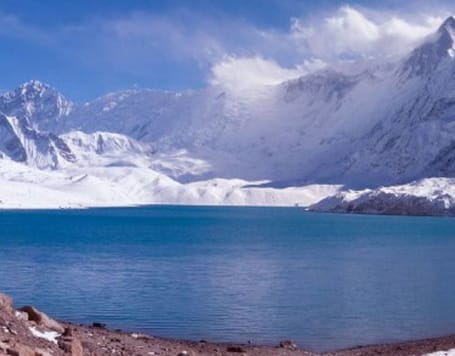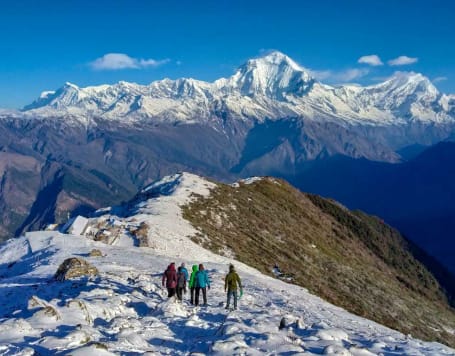The Annapurna Base Camp Trek from India is an awe-inspiring adventure that takes you from the heart of India to the breathtaking Annapurna region in Nepal. Starting from the vibrant city of New Delhi or other major Indian cities, this trek leads you through lush forests, picturesque villages, and serene landscapes. As you cross the border into Nepal, you'll embark on a journey that culminates at the iconic Annapurna Base Camp. This trek offers a perfect blend of natural beauty and cultural immersion, making it an unforgettable experience for adventurers seeking the thrill of the Himalayas and the warmth of Nepalese hospitality.
Quick Facts
➔ Start point: Nayapul
➔ End Point: Nayapul
➔ Trek Level: Easy to Moderate
➔ Total Trail Distance: 110 kilometers
➔ Trek Altitude: 8092m
➔ Duration: 14 days
Inclusion
- Stay: Lodging is included on sharing basis
- Meal: Breakfast, lunch and dinner as per the itinerary
- Guide: Fee for guiding, Mountain guide costs
- Transport: Transportation to and from the starting point, Transportation during the journey
- Permit: Entrance and permit fees
- Porters: Porters in groups
How to reach
By Air
➔ To reach the Annapurna Base Camp Trek from India by air, travelers can book a flight from major Indian cities like New Delhi, Mumbai, or Kolkata to Kathmandu, Nepal.
➔ From Kathmandu, take a short domestic flight to Pokhara, which serves as the starting point for the trek.
By Road
➔ To reach the Annapurna Base Camp Trek from India by road, travelers can cross the India-Nepal border at Sunauli or other designated border crossings. From there, take a bus or hire a taxi to reach Kathmandu, Nepal.
➔ From Kathmandu, you can either take a domestic flight to Pokhara or continue the journey by road to Pokhara, the trek's starting point.
By Train
➔ There is no direct train route from India to the Annapurna Base Camp Trek. Travelers typically take a train to major Indian cities like New Delhi or Gorakhpur and then proceed by road or air to Kathmandu, Nepal.
➔ From Kathmandu, you can continue to Pokhara by air and then start the trek.


